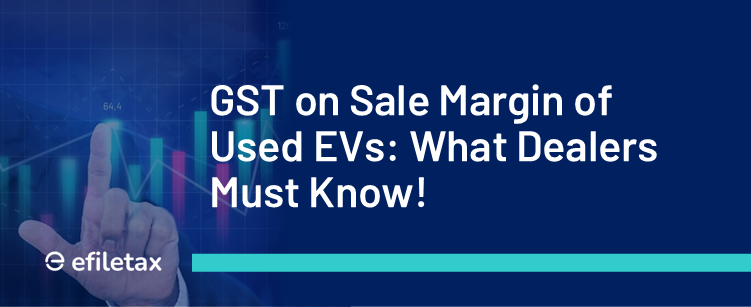
GST on Sale Margin of Old EVs and Used Vehicles: What You Need to Know
The Central Board of Indirect Taxes & Customs (CBIC) has introduced a significant update in GST regulations. Effective immediately, an 18% GST will be applied to the sale margin of old and used electric vehicles (EVs), as well as smaller petrol and diesel cars. This rule, however, applies only to registered dealers engaged in the business of trading used vehicles.
For restaurants within 5-star hotels charging ₹7,500 or more for room tariffs, 5% GST can now be levied, effective April 1, 2025, provided they do not claim Input Tax Credit (ITC).
Key GST Changes for Old and Used Vehicles
The GST Council had recommended aligning the tax rates on all old and used vehicles to a unified rate of 18% during its July 2024 meeting. This replaces the earlier tax rates that varied across vehicle categories. Here are the updated norms:
- Applicable Vehicles:
- All old and used vehicles, including EVs.
- Petrol vehicles with engines under 1,200 cc or length under 4,000 mm.
- Diesel vehicles with engines under 1,500 cc or length under 4,000 mm.
- Exemptions:
- No GST is applicable if one individual sells a used vehicle directly to another individual.
- Registered Dealers:
- GST is charged only on the margin of the supplier—the difference between the sale price and the depreciated value of the vehicle.
- If the margin is negative, no GST is payable.
Calculating GST on Sale Margins
To simplify the calculation, let’s explore examples based on the new norms:
Example 1: No GST Due to Negative Margin
- Purchase Price: ₹20 lakh
- Depreciation Claimed: ₹8 lakh
- Depreciated Value: ₹12 lakh
- Selling Price: ₹10 lakh
- Margin: ₹10 lakh – ₹12 lakh = Negative Margin
In this case, no GST is payable.
Example 2: GST on Positive Margin
- Purchase Price: ₹20 lakh
- Depreciated Value: ₹12 lakh
- Selling Price: ₹15 lakh
- Margin: ₹15 lakh – ₹12 lakh = ₹3 lakh
Here, GST at 18% applies to ₹3 lakh, resulting in a tax of ₹54,000.
Example 3: Trading Without Depreciation
- Purchase Price: ₹12 lakh
- Selling Price: ₹10 lakh
- Margin: ₹10 lakh – ₹12 lakh = Negative Margin
No GST is applicable since the margin is negative.
Why This Matters
This unified rate of 18% aims to simplify compliance for dealers while maintaining tax parity across different vehicle categories. It also clarifies the distinction between B2B and B2C transactions, ensuring that individual sellers are not burdened with unnecessary tax obligations.
Implications for Dealers
- Registered Dealers: Must account for GST on the margin, ensuring accurate record-keeping of purchase and sale prices, as well as depreciation claimed under the Income Tax Act.
- Buyers: Benefit from transparency in pricing when purchasing from registered dealers.
Conclusion
The new GST framework on old and used vehicles introduces much-needed clarity and uniformity. Dealers must ensure compliance by correctly calculating margins and applying GST where applicable.